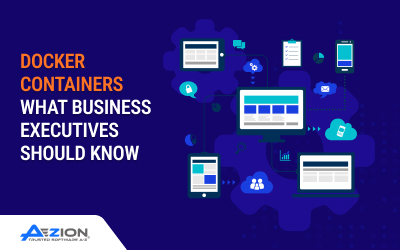Summary
Data is the basic need of all business owners today. Whether improving operations or customer experience, organizations use Business Intelligence in their daily workflows to stay ahead of the competition. This blog gives examples of business intelligence within industries to show how companies convert raw data into insights that bring results.
Introduction
Business Intelligence (BI) is a strategic priority for business owners in 2025 to drive data-driven decisions. With growing data, insights grow, giving businesses a competitive edge. This blog post explores Business Intelligence examples showing how industries use BI tools to solve challenges, seize better opportunities, and improve performance.
Understanding Business Intelligence
Business Intelligence involves the collection, arrangement, and analysis of data using a set of tools and tech for businesses to transform raw data into actionable insights. The insights help leaders monitor performance, find opportunities, predict trends, and make strategic decisions across various departments and operations.
Business Intelligence Examples Across Industries
Business Intelligence is a tool many industries use to tackle challenges, improve efficiency, and scale decision-making via custom data insights and analytics tools.
Marketing
Business Intelligence in marketing uses data integration, real-time analytics, and visualization tools to review campaign performance, segment audiences, and improve digital ad spend as per actionable metrics and predictive behavior models.
- Campaign Performance Analysis: Track multi-channel campaign KPIs using BI dashboards. It includes CTRs, impressions, and conversion metrics giving proper management and agile optimization of the marketing efforts.
- Customer Segmentation: Use clustering algorithms and historical behavioral data in BI platforms to categorize customers for personalized messaging, targeted offers, and improved lifecycle marketing strategies.
- ROI Dashboards for Paid Ads: It has ad platform APIs with Business Intelligence tools to calculate real-time return on investment by campaign, ad group, and keyword for optimal budget efficiency and attribution accuracy.
Sales
Business Intelligence in sales empowers teams with data-driven insights through pipeline visibility, sales forecasting, and win-loss analysis. BI tools integrate CRM, ERP, and external data to refine strategies and improve conversion efficiency.
- Sales Pipeline Tracking: BI dashboards track real-time deal progress across stages, monitor lead aging, and visualize sales velocity. It helps managers find pipeline issues, focus on high-value opportunities, and improve forecast reliability.
- Revenue Forecasting: Business Intelligence tools use historical sales patterns, market trends, and seasonality to build predictive models. These forecasts support inventory planning, quota setting, and financial strategy alignment across departments.
- Win/Loss Analysis: BI platforms evaluate closed opportunities to uncover win themes and loss reasons. Insights help refine messaging, optimize sales enablement content, and improve positioning against key competitors.
Retail & Online Commerce
Retail and e-commerce business owners depend on business intelligence for proper inventory to personalize customer journeys, manage procurement, and check real-time sales data across multiple channels for better operational and customer experience efficiency.
- Sales Forecasting: It uses time series Business Intelligence models and historical purchase data to assess future demands and trends and give options for better stock planning, dynamic pricing, and responsive merchandising strategies.
- Supply Chain Analysis: Business Intelligence tools combine logistics, vendor, and fulfillment data to monitor supply chain efficacy, find delays, reduce lead times, and maintain consistent inventory across all warehouses and channels.
- Customer Relationship Management: It checks customer behavior, order history, and engagement via Business Intelligence dashboards to customize outreach, increase loyalty, and personalize product recommendations in omnichannel environments.
- Procurement Management: It uses Business Intelligence to track vendor performance, negotiate better pricing, and predict reorder points. Real-time dashboards offer smarter purchasing decisions and better cost control.
- Identify Cross-Selling Opportunities: BI systems mine transaction data to analyze buying patterns, giving a strategic bundling and targeted promotions that increase average order value and maximize revenue per customer.
- Store Performance Comparison: Check footfall, sales per square foot, and inventory turnover across locations to analyze and find underperforming stores and adjust staffing or product stock based on that data.
- Real-Time Inventory Visibility: BI tools sync with POS and warehouse systems for proper, real-time inventory levels. It reduces stockouts, overstock, and fulfillment delays across physical and digital storefronts.
Finance
BI in Finance gives business owners in-depth visibility into financial performance, improves risk management, and optimizes budgets via real-time dashboards, automated reporting, and predictive analytics models integrated with core systems.
- Expense Tracking Dashboards: BI tools consolidate expenditures from multiple departments into dynamic dashboards, allowing finance teams to monitor spending patterns, control budgets, and identify areas of high operational costs.
- Risk Management: Use BI systems to detect anomalies, model financial risks, and track compliance. These tools integrate with regulatory databases to flag potential exposures and maintain governance standards.
- Cash Flow Management: BI platforms analyze receivables, payables, and liquidity data to optimize cash flow. Real-time insights help find shortfalls and maintain sufficient working capital.
- Cost Reduction: Business Intelligence finds cost-saving opportunities by analyzing procurement, labor, and operational metrics. Finance leaders use the insights to eliminate waste and reallocate funds more effectively.
- Fraud Detection Using Analytics: BI tools apply pattern recognition and anomaly detection to transactional data, flagging suspicious activities and potential fraud early to protect financial assets and ensure internal compliance.
Human Resources
Business Intelligence in HR centralizes workforce data to track employee engagement, analyze attrition trends, and support diversity initiatives. BI tools integrate with HRMS platforms for data-driven talent and organizational planning.
- Attrition Trend Dashboard: BI dashboards monitor historical and current attrition rates across departments, tenure, and demographics to assist HR teams in identifying retention issues and using targeted employee engagement strategies.
- Diversity Hiring Insights: Analyze hiring data with BI tools to check diversity goals, track representation across roles, and support inclusive recruitment strategies that align with organizational values and compliance requirements.
- Employee Engagement Metrics: BI platforms check engagement via surveys, feedback loops, and performance trends. They also help the HR team create proactive retention strategies and monitor workplace sentiment over time.
Telecommunications
Telecom companies deal with vast amounts of customer and operational data. Business Intelligence supports their daily functions by improving maintenance schedules, tracking service performance, monitoring customer satisfaction, and managing overall operations.
- Network Performance: BI Dashboards view bandwidth usage, service disruptions, and latency across locations. It helps teams identify issues quickly and strengthen network reliability across regions and devices.
- Customer Retention: Reviewing churn patterns and feedback, businesses can pinpoint issues, assess risk, and develop targeted communication strategies to retain long-term subscribers.
- Preventing Data Leakages: Monitoring traffic behavior helps spot irregularities that could signal a breach. It helps in timely action to protect sensitive data and align with regulatory requirements.
Healthcare
Hospitals and medical institutions apply Business Intelligence to strengthen patient care, streamline daily operations, and effectively coordinate internal resources. It supports clinical decisions, hospital management, care planning, and research-based assessments.
- Customized Treatment Plans: Business Intelligence platforms combine electronic health records, diagnostic reports, and patient histories to support care plans tailored to each individual. This process supports more accurate decisions based on past medical evidence.
- Operations Efficiency in Hospitals: BI dashboards track patient admissions, bed availability, workforce shifts, and scheduling bottlenecks. These insights assist healthcare teams in reducing delays, managing capacity, and upholding care standards across departments.
- Patient Readmission Forecasting: Historical health data, diagnoses, and care duration help BI tools find trends linked to readmissions. The findings assist care teams in identifying high-risk individuals and applying preventive steps before conditions worsen.
- Faster Drug Development Cycles: Business Intelligence tools process trial outcomes, genetic data, and lab findings to identify effective compounds and guide each stage of pharmaceutical development more precisely.
Supply Chain and Logistics
Business Intelligence supports better visibility across supply chains, strengthens delivery planning, and helps maintain supplier accountability. It equips logistics teams to monitor stock, review vendor data, and structure distribution activities effectively.
- Inventory Planning and Demand Forecasting: Historical sales patterns, seasonal shifts, and live inventory figures are reviewed to anticipate future needs. This helps prevent surplus, avoid stockouts, and use storage areas more efficiently.
- Delivery Route Assessment: BI tools evaluate route data to find delays, traffic issues, and fuel use patterns. The data helps logistics planners to reduce delivery time and transportation costs.
- Vendor Reliability Tracking: BI tools collect metrics such as delivery punctuality, product faults, and pricing fluctuations to evaluate suppliers. A centralized report on the data helps teams review contracts and select dependable vendor partners.
Manufacturing
Manufacturing teams use BI tools to track production activity, monitor equipment behavior, and examine cost trends. These tools bring clarity to operations and help teams take timely actions across plant floors.
- Maintenance Planning: BI tools review sensor logs, machine activity, and service records to detect irregularities. Early alerts allow planners to schedule inspections in advance and reduce the chances of sudden equipment failure.
- Cost Breakdown and Resource Tracking: Dashboards present detailed views of labor hours, raw material usage, and facility spending. This level of insight helps manufacturers spot waste points and maintain consistent operating margins.
Real-World Examples of Business Intelligence
Companies use business intelligence to scale operations and customer experiences and gain a competitive advantage. Below are a few real-world examples of companies using BI to make data-driven decisions that lead to measurable scale, efficiency, and innovation outcomes.
Netflix
Netflix applies Business Intelligence to track user behavior, viewership patterns, and content preferences. These insights power its recommendation engine, guide decisions on original content investments, and improve user retention by predicting binge behavior and customizing regional content strategies.
Amazon
Amazon uses BI across its operations to dynamically adjust product pricing, optimize inventory flow, and forecast demand spikes. With real-time analytics integrated across departments, Amazon enhances customer personalization and maintains a responsive, highly automated global supply chain.
Starbucks
Starbucks uses Business Intelligence to assess store-level performance, understand customer loyalty trends, and monitor product sales. BI tools here support the rollout of new beverages, localized menu customization, and strategic planning for expansion based on real-time market and demographic data.
American Express
American Express employs BI to detect fraudulent transactions, assess credit risk, and personalize product offerings. With historical and real-time data integration, BI systems enhance customer targeting, improve financial safety, and support regulatory compliance across all global operations.
Coca-Cola
Coca-Cola depends on Business Intelligence for demand forecasting, distribution efficiency, and regional product performance tracking. BI dashboards help them improve marketing campaigns, find top-performing SKUs, and align production with consumer trends across different countries and retail environments.
Conclusion
These Examples of Business Intelligence show how companies turn data into strategic assets. Using BI tools with enterprise systems gives companies insights to improve decision-making and performance. To build scalable, insight-driven ecosystems, custom Data Engineering Solutions are the key to ideal Business Intelligence across departments and industries.
FAQs
What is an example of Business Intelligence in everyday operations?
A common use case is tracking daily sales through dashboards. Teams can quickly identify which products underperform, compare regions, and adjust inventory or pricing decisions based on customer buying patterns.
How do these tools serve different industries?
BI tools organize raw data into structured formats, allowing teams to spot patterns, detect risks, and make informed choices that align with each sector’s unique demands.
Do enterprises commonly use any BI tools?
Yes. Companies often use platforms with features like visual reporting, centralized dashboards, and data connectivity. These tools simplify business processes and help departments act on information without delay.
What industries benefit the most from this approach?
Industries such as retail, finance, logistics, and healthcare see strong results because they rely heavily on quick decisions, real-time tracking, and consistent internal and external activity evaluation.
How can a company start using business data intelligence solutions?
Begin by setting clear goals, identifying existing data sources, and selecting a platform that fits current needs. Work with internal or external experts to build structured systems that support long-term data use.
How do BI tools differ from advanced analytics platforms?
BI tools focus on real-time reporting and visualization, while advanced analytics platforms include predictive modeling, machine learning, and statistical techniques for future-oriented insights.



